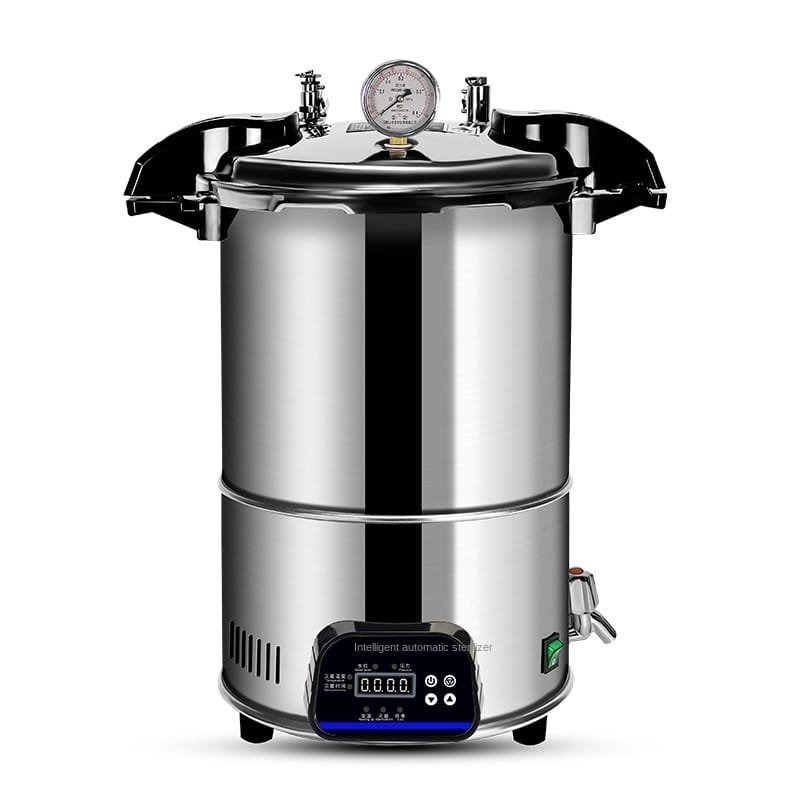
The autoclave sterilization process operates by using steam under pressure as a moist heat method to eliminate microorganisms. The autoclave sterilization method stands out as highly efficient because it delivers fast results without leaving chemical residues while maintaining reliability.
蒸気: Steam acts as the main sterilizing agent which penetrates materials with high effectiveness.
圧力: Pressure raises steam temperature beyond the water’s boiling point.
High Temperature: Denatures proteins while breaking down cell membranes to destroy microorganisms.
バキューム前段階:
Eliminating air from the chamber allows steam to infiltrate every material.
The pre-vacuum phase stands as a vital step for proper sterilization because it ensures steam reaches porous and wrapped items.
滅菌段階:
Steam enters the chamber while temperature and pressure levels remain constant throughout the predetermined time period.
The typical operating temperature for autoclave sterilization falls between 121°C and 134°C while maintaining a stable pressure of 15 psi.
Different sterilization materials require specific times for this phase with most instruments needing 15-20 minutes.
排気フェーズ:
Once steam exits the chamber pressure stabilizes to its normal level.
This stage verifies that the chamber can be opened without risk.
乾燥段階:
Items are dried to prevent moisture-related contamination.
Wrapped instruments and porous materials require careful attention during this drying step.
Autoclaving remains the preferred method for moist heat sterilization because it combines speed with high effectiveness against all forms of microbial life and leaves no harmful residues. **
The autoclaving process completes quicker than alternative sterilization techniques like dry heat.
The process reliably destroys bacteria along with viruses and spores.
Autoclaving does not produce harmful residues unlike chemical sterilization methods.
Autoclaves generally operate at 121°C for sterilization although some applications require higher temperatures such as 134°C.
By setting the pressure of the autoclave to 15 psi, the system reaches temperatures above the water’s boiling point.
The sterilization of most materials in an autoclave requires a temperature setting of 121°C.
結論 Modern sterilization methods fundamentally rely on the autoclave sterilization process. The understanding of its steps and key components enables you to achieve effective sterilization of medical instruments together with laboratory equipment and other materials. Mastering this process is essential for all healthcare workers, researchers, and industrial professionals who want to maintain a sterile environment.
Ready to optimize your sterilization process?
Find a dependable autoclave solution for your facility by exploring our selection of top-rated models. Find the best autoclave to fulfill your requirements by browsing our top-rated options.
お問い合わせ: Have questions about autoclave sterilization? Contact our specialists at our contact page to receive customized guidance and assistance.
Why Autoclave Is The Best Method Of Sterilization